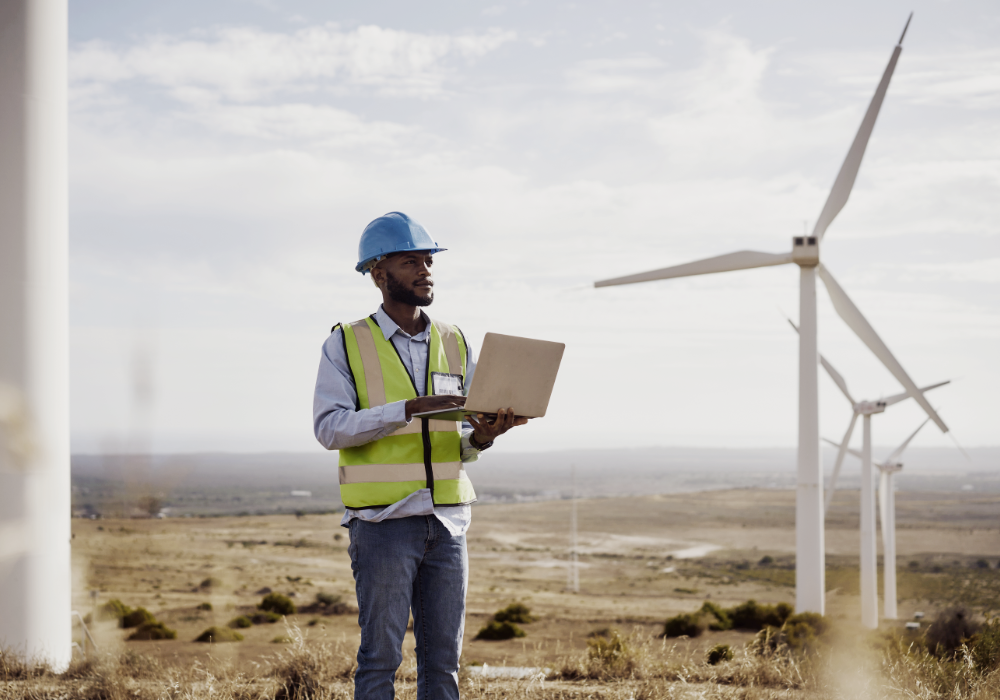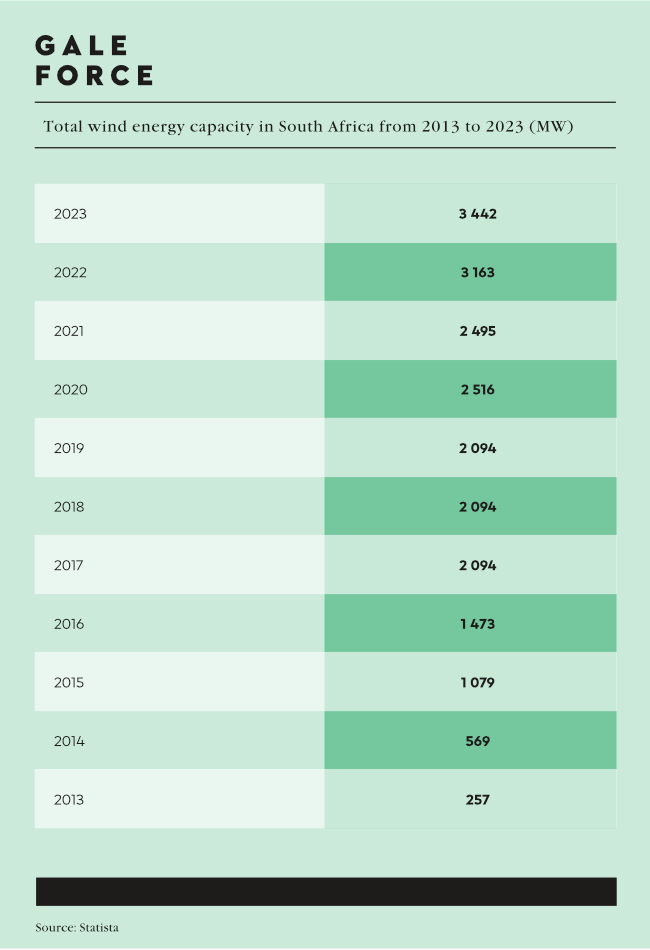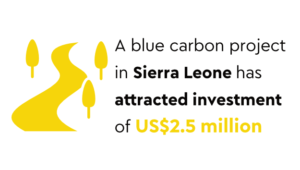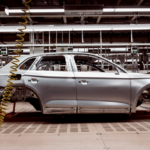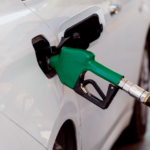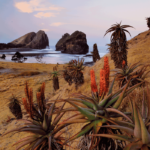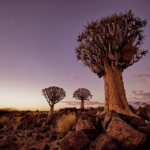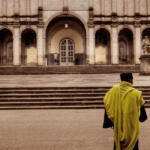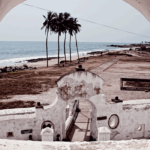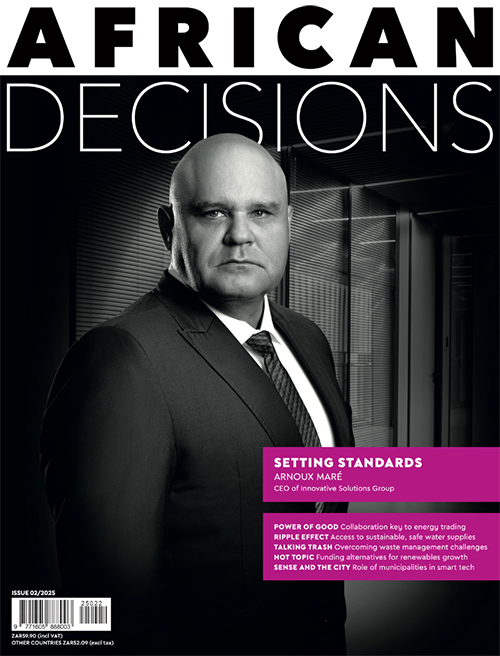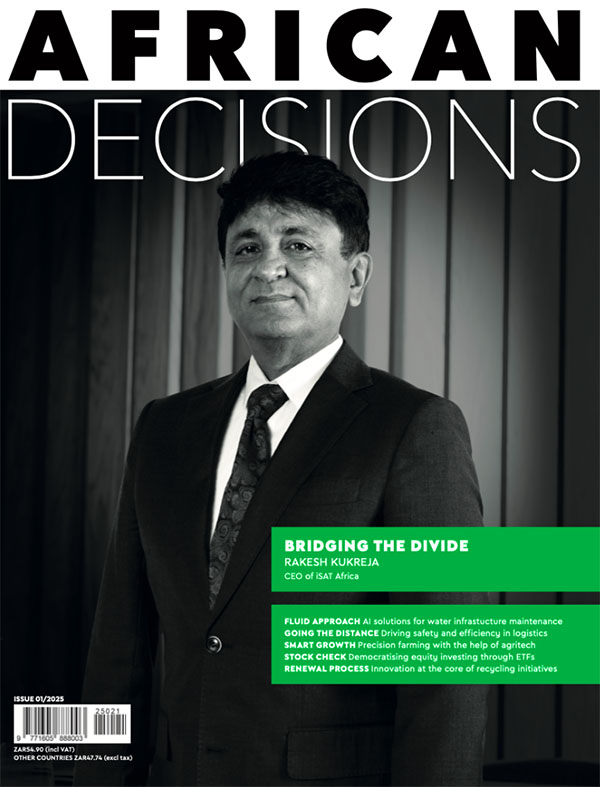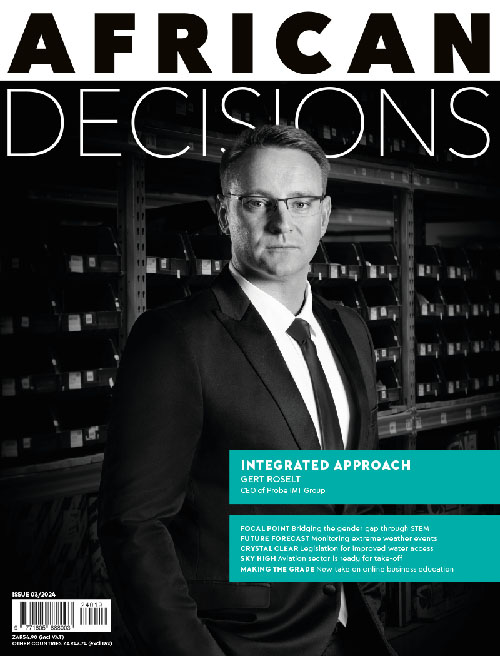Imagine a transport rig nearly 100m-long navigating the twists and turns of public roads for almost 500 km. That is the logistical challenge South African company Vanguard was given to transport the longest wind turbine blades in the country from wharf side to wind farm construction site. Each blade measured 82.5m, weighed 28 tons and required a transport rig with a total length of 95m.
‘With 78 sets arriving into Coega port and each set containing three blades, a nacelle, a generator, a hub and containers, over 550 individual pieces of cargo are required to be transported 500 km to Noupoort,’ says Joost Heystek, project manager at Vanguard.
‘This project has been months in the planning, and it’s great to see all of the preparation and engineering work come to life with the transport phase beginning.’
The design of the port layout has been critical within the engineering works, according to Vanguard. ‘Due to the number of components arriving at the port, including 234 of the longest blades to be offloaded in South Africa, it is essential that the cargo is stored to allow for access and manoeuvrability at all times. This will enable the transport operation of two convoys per week, for the next 12 months, to run smoothly.
‘Extensive engineering works have also been carried out on the 500 km route. Vanguard completed route surveys and swept path analysis to understand the pinch points along the route including street furniture and telecoms lines within the towns that the cargo would need to pass through. As well as bridges that need to be navigated with the highest level of precision and new roads that have been built to allow access for the convoys,’ the company said.
The turbines form part of the huge EDF Renewables’ construction project of the Koruson 1 cluster of three wind farms – Phezukomoya, San Kraal and Coleskop – outside Middelburg and Noupoort.
‘The scale of the Koruson 1 project is massive with the three sites spread across 50 km2. There are 78 wind turbines that will be installed on concrete towers, now being assembled and erected across the three sites. The 124m-high concrete towers each comprise 50 keystones, all manufactured locally at a concrete tower factory outside Middelburg,’ according to EDF Renewables.
Each wind farm has a capacity of 140 MW, with a total installed capacity of 420 MW. ‘This makes it the biggest wind farm ever built in Africa. The total investment in the project is ZAR11 billion.’ In addition to the three wind farms, a main transmission station and three substations are under construction to transmit the power to Eskom.
The project is part of Round 5 of the country’s Renewable Energy Independent Power Producer Procurement programme, aimed at reducing South Africa’s dependence on coal-fired power.
Koruson 1 is just one of the many wind projects under way in South Africa. In July, for example, Seriti Green launched the first phase of the company’s ZAR25 billion wind farm project in the Mpumalanga province.
Seriti Green plans to build 900 MW of wind energy projects over the next three years, with the first phase being the 155 MW Ummbila Emoyeni site, according to the company. Construction on the facility is currently under way and is expected to be completed in mid-2026. It will cost close to ZAR5 billion.
This is Seriti Green’s first project since Seriti Resources, one of the country’s biggest coal miners, acquired Windlab and subsequently launched Seriti Green in 2023.
Meanwhile, the booming wind energy industry has allowed further manufacturing opportunities. In the Eastern Cape, a wind turbine concrete tower factory is nearing completion. Located in Jeffreys Bay, about 1.5 hours from the Port of Ngqura, the factory will ‘produce 120m-high towers for three wind farms with a combined capacity of 336 MW, significantly boosting the country’s renewable energy share, enhancing energy security, while solidifying the region as a leading wind power zone with 13 wind farms,’ according to a statement from Nordex Energy South Africa, the developer.
‘The construction of the plant is stimulating the local economy and fostering growth in the local supply chain through increased demand for raw materials and related goods and services, which is benefiting local businesses and suppliers,’ says David Moncasi Hortet, head of sales for Africa at Nordex Energy South Africa.
While South Africa is best known for its solar resources it has ‘exceptional’ wind potential too, according to experts. A study by Siemens Gamesa, for instance, revealed that ‘South Africa’s high wind speeds – 12 m/s at 100m height at the best sites, but on average 7.5 m/s to 8 m/s – do offer very favourable conditions for wind installations, particularly along the coastlines’.
Over the past decade, South Africa’s wind industry has attracted more than ZAR89 billion in investments, creating in excess of 23 000 jobs and powered at least 3 million homes annually, says the South African Wind Energy Association (SAWEA). It adds that in the first quarter of 2024, wind technology accounted for 4.9% of the nation’s electricity produced, making it the leading renewable energy technology in South Africa.
South Africa’s wind energy capacity increased from 257 MW in 2013 to 3 442 MW in 2023, according to Statista, and there are now more than 30 wind farms in operation.
Additionally, the country’s Integrated Resource Plan envisions adding another 14 400 MW of wind power by 2030. Apart from the provision of energy, ‘the rapid expansion of the wind industry requires a diverse array of skills and roles’, notes SAWEA.
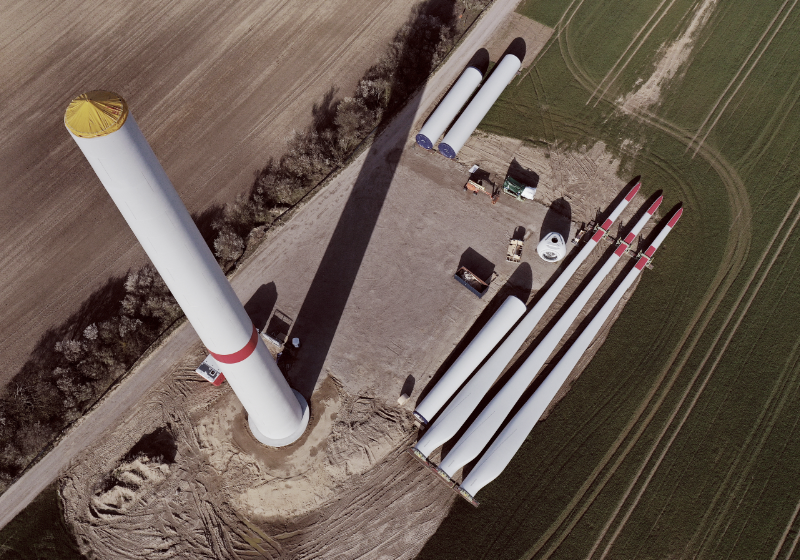
‘The wind industry requires a blend of technical, policy, legal and environmental expertise across the full value chain. We are seeing an increasing need for professionals in monitoring and control systems, AI-based maintenance and data analysis,’ says Santosh Sookgrim, senior technical advisor at SAWEA.
SAWEA says that to meet these needs the industry is actively expanding its talent pool. ‘Initiatives such as SAWEA’s Wind Industry Internship programme are essential in attracting new graduates. Furthermore, the sector is tapping into related industries and upskilling workers through short courses and on-the-job training, such as SAWEA’s Management Development Programme for Women in Renewable Energy. Ensuring accessibility and opportunities for entry remains a priority to sustain this growth,’ according to the organisation.
The wind industry’s contribution to South Africa’s economic and environmental goals is undeniable. ‘As the country continues to embrace renewable energy, the job opportunities created by this sector will play a crucial role in driving sustainable development and prosperity for future generations,’ states SAWEA.
‘The wind industry’s future in South Africa is promising, with job growth projections closely tied to the sector’s expansion. As the demand for renewable energy rises, so will the need for a skilled workforce,’ says Sookgrim.
‘However, challenges such as regulatory hurdles, grid integration and the need for continuous innovation remain. These challenges need to be addressed through strategic planning, enhanced training programmes, policies that support sustainable growth and collaboration between industry and government.
‘We are committed to meeting today’s energy needs and ensuring a sustainable and prosperous future,’ he says. By investing in technological innovation, skills development and community engagement, the wind industry can be a catalyst for transformative economic and environmental change.

